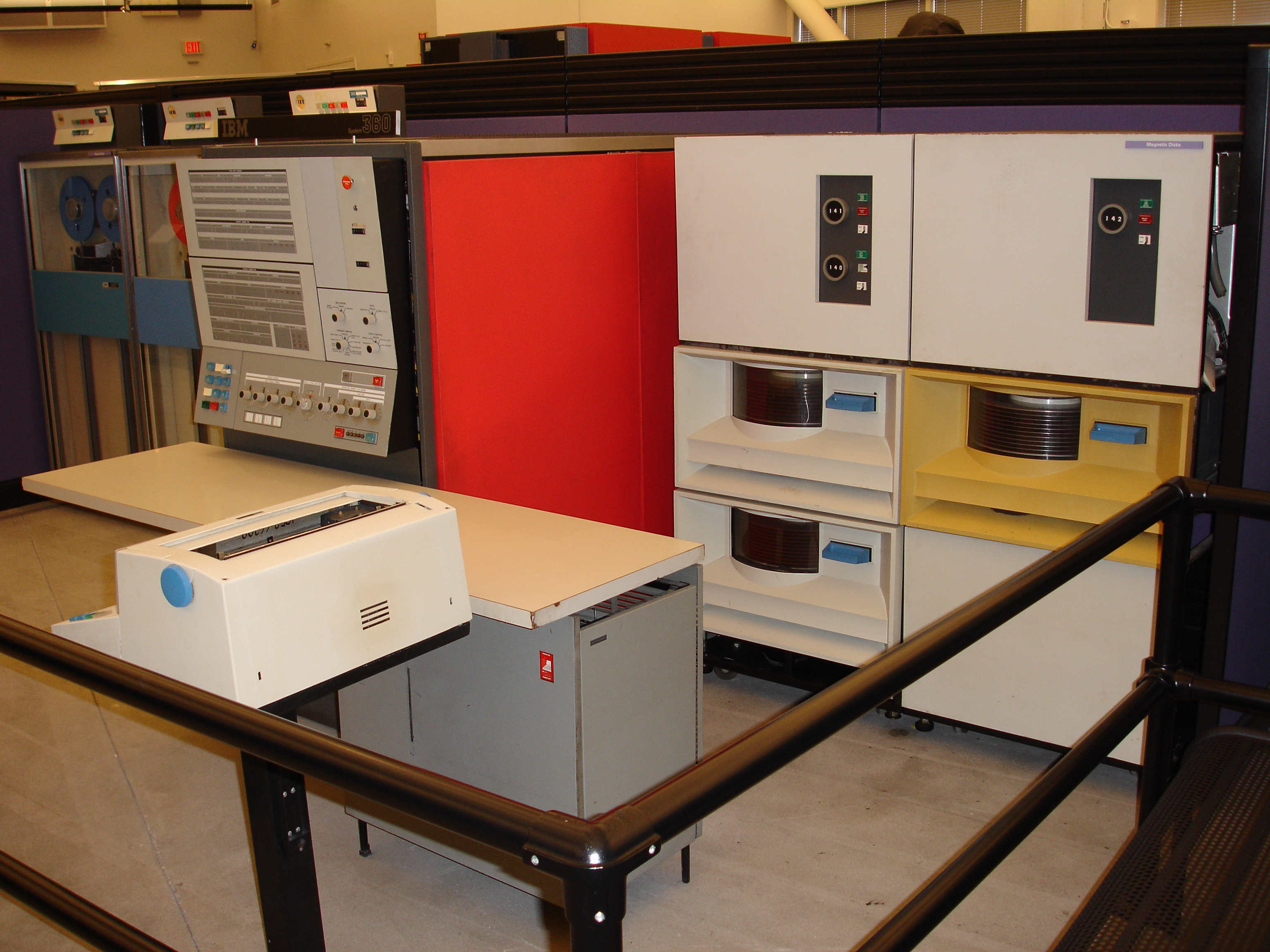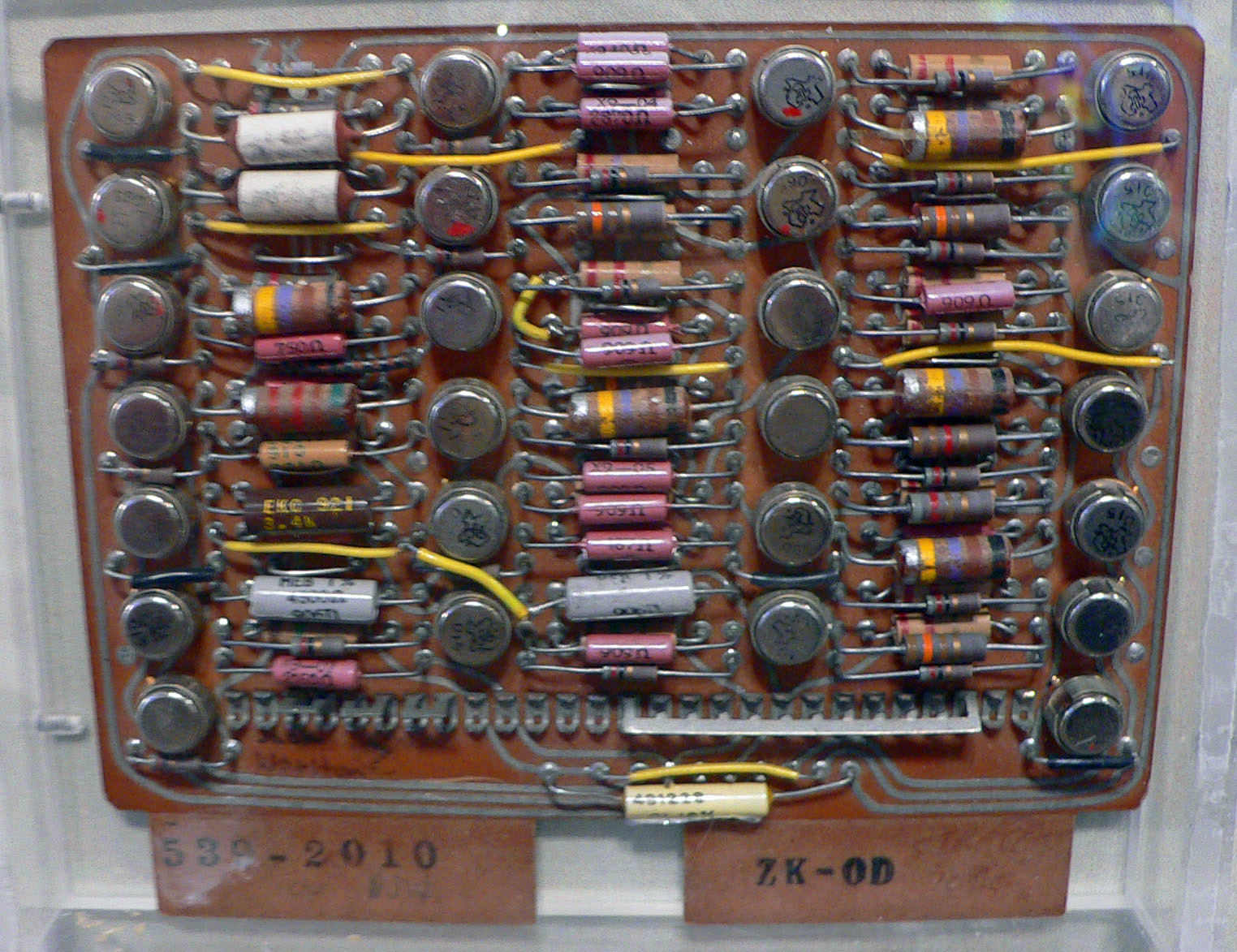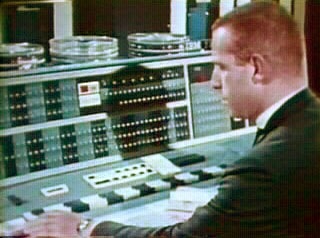|
Philco Computers
Philco was one of the pioneers of transistor computer, transistorized computers, also known as ''second generation computers''. After the company developed the surface barrier transistor, which was much faster than previous point-contact types, it was awarded contracts for military and government computers. Commercialized derivatives of some of these designs became successful business and scientific computers. The TRANSAC (Transistor Automatic Computer) Model S-1000 was released as a scientific computer. The TRANSAC S-2000 mainframe computer system was first produced in 1958, and a family of compatible machines, with increasing performance, was released over the next several years. However, the mainframe computer market was dominated by IBM. Other companies could not deploy resources for development, customer support and marketing on the scale that IBM could afford, making competition in this segment difficult after the introduction of the IBM 360 family. Philco went bankrupt an ... [...More Info...] [...Related Items...] OR: [Wikipedia] [Google] [Baidu] |
Philco
Philco (an acronym for Philadelphia Battery Company) is an American electronics industry, electronics manufacturer headquartered in Philadelphia. Philco was a pioneer in battery, radio, and television production. In 1961, the company was purchased by Ford Motor Company, Ford and, from 1966, renamed "Philco-Ford". Ford sold the company to GTE in 1974, and it was purchased by North American Philips, Philips in 1981, which became a subsidiary of the Dutch company Philips in 1987. In North America, the Philco brand is owned by Philips. In other markets, the Philco International brand is owned by Electrolux. In the early 1920s, Philco made storage batteries, "socket power" battery eliminator units (plug-in transformers), and battery chargers. With the invention of the rectifier tube, which made it practical to power radios by electrical outlets, in 1928, Philco entered the radio business. They followed other radio makers such as RCA, Atwater-Kent, Zenith Electronics, Freshman Masterpie ... [...More Info...] [...Related Items...] OR: [Wikipedia] [Google] [Baidu] |
Paper Tape
Five- and eight-hole wide punched paper tape Paper tape reader on the Harwell computer with a small piece of five-hole tape connected in a circle – creating a physical program loop Punched tape or perforated paper tape is a form of data storage that consists of a long strip of paper through which small holes are punched. It was developed from and was subsequently used alongside punched cards, the difference being that the tape is continuous. Punched cards, and chains of punched cards, were used for control of looms in the 18th century. Use for telegraphy systems started in 1842. Punched tapes were used throughout the 19th and for much of the 20th centuries for programmable looms, teleprinter communication, for input to computers of the 1950s and 1960s, and later as a storage medium for minicomputers and CNC machine tools. During the Second World War, high-speed punched tape systems using optical readout methods were used in code breaking systems. Punched tape was used to t ... [...More Info...] [...Related Items...] OR: [Wikipedia] [Google] [Baidu] |
36-bit Computers
36-bit computers were popular in the early mainframe computer era from the 1950s through the early 1970s. Starting in the 1960s, but especially the 1970s, the introduction of 7-bit ASCII and 8-bit EBCDIC led to the move to machines using 8-bit bytes, with word sizes that were multiples of 8, notably the 32-bit IBM System/360 mainframe and Digital Equipment VAX and Data General MV series superminicomputers. By the mid-1970s the conversion was largely complete, and microprocessors quickly moved from 8-bit to 16-bit to 32-bit over a period of a decade. The number of 36-bit machines rapidly fell during this period, offered largely for backward compatibility purposes running legacy programs. History Prior to the introduction of computers, the state of the art in precision scientific and engineering calculation was the ten-digit, electrically powered, mechanical calculator, such as those manufactured by Friden, Marchant and Monroe. These calculators had a column of keys for each ... [...More Info...] [...Related Items...] OR: [Wikipedia] [Google] [Baidu] |
IBM/360
The IBM System/360 (S/360) is a family of mainframe computer systems announced by IBM on April 7, 1964, and delivered between 1965 and 1978. System/360 was the first family of computers designed to cover both commercial and scientific applications and a complete range of applications from small to large. The design distinguished between computer architecture, architecture and implementation, allowing IBM to release a suite of compatible designs at different prices. All but the only partially compatible IBM System/360 Model 44, Model 44 and the most expensive systems use microcode to implement the instruction set, featuring 8-bit computing, 8-bit byte addressing and fixed-point binary, fixed-point decimal and IBM hexadecimal floating-point, hexadecimal floating-point arithmetic, floating-point calculations. The System/360 family introduced IBM's Solid Logic Technology (SLT), which packed more transistors onto a circuit card, allowing more powerful but smaller computers. System/36 ... [...More Info...] [...Related Items...] OR: [Wikipedia] [Google] [Baidu] |
COBOL
COBOL (; an acronym for "common business-oriented language") is a compiled English-like computer programming language designed for business use. It is an imperative, procedural, and, since 2002, object-oriented language. COBOL is primarily used in business, finance, and administrative systems for companies and governments. COBOL is still widely used in applications deployed on mainframe computers, such as large-scale batch and transaction processing jobs. Many large financial institutions were developing new systems in the language as late as 2006, but most programming in COBOL today is purely to maintain existing applications. Programs are being moved to new platforms, rewritten in modern languages, or replaced with other software. COBOL was designed in 1959 by CODASYL and was partly based on the programming language FLOW-MATIC, designed by Grace Hopper. It was created as part of a U.S. Department of Defense effort to create a portable programming language for data pr ... [...More Info...] [...Related Items...] OR: [Wikipedia] [Google] [Baidu] |
IBM 704
The IBM 704 is the model name of a large digital computer, digital mainframe computer introduced by IBM in 1954. Designed by John Backus and Gene Amdahl, it was the first mass-produced computer with hardware for floating-point arithmetic. The IBM 704 ''Manual of operation'' states: The type 704 Electronic Data-Processing Machine is a large-scale, high-speed electronic calculator controlled by an internally stored program of the single address type. The 704 at that time was thus regarded as "pretty much the only computer that could handle complex math". The 704 was a significant improvement over the earlier IBM 701 in terms of architecture and implementation. Like the 701, the 704 used vacuum-tube logic circuitry, but increased the instruction size from 18-bit computing, 18 bits to 36-bit computing, 36 bits, the same as the memory's word size. Changes from the 701 include the use of magnetic-core memory instead of Williams tubes, floating-point arithmetic instructions, 15 ... [...More Info...] [...Related Items...] OR: [Wikipedia] [Google] [Baidu] |
Opcode
In computing, an opcode (abbreviated from operation code) is an enumerated value that specifies the operation to be performed. Opcodes are employed in hardware devices such as arithmetic logic units (ALUs), central processing units (CPUs), and software instruction sets. In ALUs, the opcode is directly applied to circuitry via an input signal bus. In contrast, in CPUs, the opcode is the portion of a machine language instruction that specifies the operation to be performed. CPUs Opcodes are found in the machine language instructions of CPUs as well as in some abstract computing machines. In CPUs, an opcode may be referred to as an instruction machine code, instruction code, instruction syllable, instruction parcel, or opstring. For any particular processor (which may be a general CPU or a more specialized processing unit), the opcodes are defined by the processor's instruction set architecture (ISA). They can be described using an opcode table. The types of operations may in ... [...More Info...] [...Related Items...] OR: [Wikipedia] [Google] [Baidu] |
Philco 212 At The Computer History Museum (4311194741)
Philco (an acronym for Philadelphia Battery Company) is an American electronics industry, electronics manufacturer headquartered in Philadelphia. Philco was a pioneer in battery, radio, and television production. In 1961, the company was purchased by Ford Motor Company, Ford and, from 1966, renamed "Philco-Ford". Ford sold the company to GTE in 1974, and it was purchased by North American Philips, Philips in 1981, which became a subsidiary of the Dutch company Philips in 1987. In North America, the Philco brand is owned by Philips. In other markets, the Philco International brand is owned by Electrolux. In the early 1920s, Philco made storage batteries, "socket power" battery eliminator units (plug-in transformers), and battery chargers. With the invention of the rectifier tube, which made it practical to power radios by electrical outlets, in 1928, Philco entered the radio business. They followed other radio makers such as RCA, Atwater-Kent, Zenith Electronics, Freshman Masterpie ... [...More Info...] [...Related Items...] OR: [Wikipedia] [Google] [Baidu] |
IBM 7030 Stretch
The IBM 7030, also known as Stretch, was IBM's first transistorized supercomputer. It was the fastest computer in the world from 1961 until the first CDC 6600 became operational in 1964."Designed by Seymour Cray, the CDC 6600 was almost three times faster than the next fastest machine of its day, the IBM 7030 Stretch." Originally designed to meet a requirement formulated by Edward Teller at Lawrence Livermore National Laboratory, the first example was delivered to Los Alamos National Laboratory in 1961, and a second customized version, the IBM 7950 Harvest, to the National Security Agency in 1962. The Stretch at the Atomic Weapons Research Establishment at Aldermaston, England was heavily used by researchers there and at AERE Harwell, but only after the development of the S2 Fortran compiler which was the first to add dynamic arrays, and which was later ported to the Ferranti Atlas of Atlas Computer Laboratory at Chilton. The 7030 was much slower than expected and failed t ... [...More Info...] [...Related Items...] OR: [Wikipedia] [Google] [Baidu] |
IBM 7094
The IBM 7090 is a second-generation transistorized version of the earlier IBM 709 vacuum tube mainframe computer that was designed for "large-scale scientific and technological applications". The 7090 is the fourth member of the IBM 700/7000 series scientific computers. The first 7090 installation was in December 1959. In 1960, a typical system sold for $2.9 million (equivalent to $ million in ) or could be rented for $63,500 a month (). The 7090 uses a 36-bit word length, with an address space of 32,768 words (15-bit addresses). It operates with a basic memory cycle of 2.18 μs, using the IBM 7302 Core Storage core memory technology from the IBM 7030 (Stretch) project. With a processing speed of around 100 Kflop/s, the 7090 is six times faster than the 709, and could be rented for half the price. An upgraded version, the 7094, was up to twice as fast. Both the 7090 and the 7094 were withdrawn from sale on July 14, 1969, but systems remained in service for more than a d ... [...More Info...] [...Related Items...] OR: [Wikipedia] [Google] [Baidu] |
Field-effect Transistor
The field-effect transistor (FET) is a type of transistor that uses an electric field to control the current through a semiconductor. It comes in two types: junction FET (JFET) and metal-oxide-semiconductor FET (MOSFET). FETs have three terminals: ''source'', ''gate'', and ''drain''. FETs control the current by the application of a voltage to the gate, which in turn alters the conductivity between the drain and source. FETs are also known as unipolar transistors since they involve single-carrier-type operation. That is, FETs use either electrons (n-channel) or holes (p-channel) as charge carriers in their operation, but not both. Many different types of field effect transistors exist. Field effect transistors generally display very high input impedance at low frequencies. The most widely used field-effect transistor is the MOSFET (metal–oxide–semiconductor field-effect transistor). History The concept of a field-effect transistor (FET) was first patented by the Austr ... [...More Info...] [...Related Items...] OR: [Wikipedia] [Google] [Baidu] |







